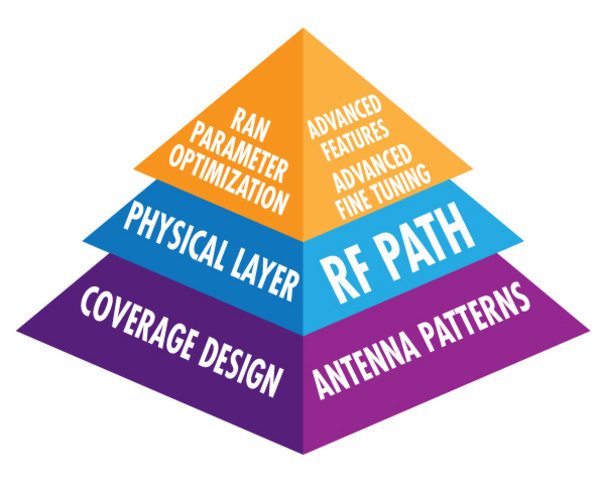 Optimizing wireless network performance is like building a pyramid, where each layer of precisely cut stones must support the layers above, and any deviation can seriously impact the entire structure. In wireless network optimization, the bottom stones are the physical layer, which is the network equipment that delivers the radio frequency (RF) coverage. Once the physical layer is optimized, then operators can build on a solid foundation, adding parameter optimization, radio resource management and other advanced features.
Optimizing wireless network performance is like building a pyramid, where each layer of precisely cut stones must support the layers above, and any deviation can seriously impact the entire structure. In wireless network optimization, the bottom stones are the physical layer, which is the network equipment that delivers the radio frequency (RF) coverage. Once the physical layer is optimized, then operators can build on a solid foundation, adding parameter optimization, radio resource management and other advanced features. Especially for LTE networks, the RF coverage layer must be precisely and correctly sculpted to fit together neatly. The upper layers of the wireless network cannot reach their full performance potential without a well-sculpted base. Negative results coming from an ill-sculpted foundation include reduced throughput that harms the user experience. Operators need strong radio signal strength in the desired coverage areas, and aggressive attenuation outside of those areas.
Deciding which base station antenna to use on a cell tower is one of the critical decisions for an RF design engineer. This decision is complicated by advances in antenna and antenna path architectures, as well as the evolution of LTE to include MIMO (Multiple Input Multiple Output), beamforming and various transmission modes. The introduction of more frequency bands for LTE has driven up the number of ports on antennas, while the antenna structures have increased in size as more capabilities have been integrated. All of these changes can impact antenna selection and performance.
There is significant opportunity for network operators to improve smartphone data performance by taking advantage of a host of new features and capabilities in LTE. To do so, their RF engineers need to understand the tradeoffs involved in selecting an antenna for the foundational layer. CommScope and Sprint co-authored a white paper called “Base station antenna selection for LTE networks” to provide insightsinto some of these tradeoffs. The paper provides a free overview of antennas and their application in practical configurations for various types of LTE antenna techniques.
Let me know if you have specific questions by leaving a comment below. Which transmission modes are you using? Have you turned on beamforming? Which horizontal beamwidth works best for you?







